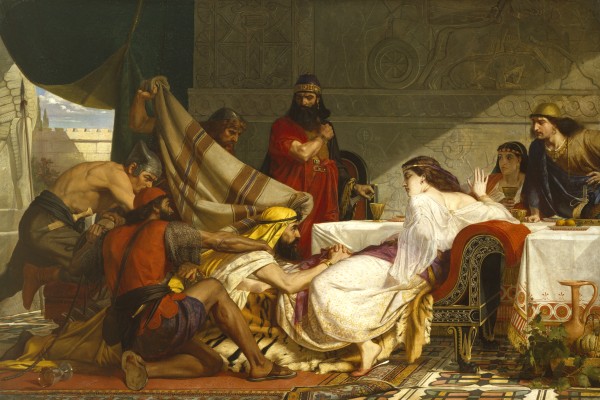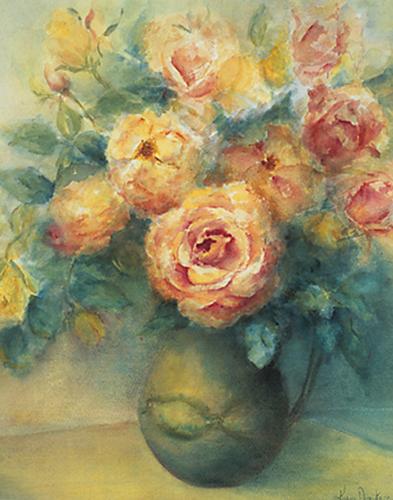Edward Armitage (1817 – 1896)
Get a Edward Armitage (1817 – 1896) Certificate of Authenticity for your painting (COA) for your Edward Armitage (1817 – 1896) drawing.
For all your Edward Armitage (1817 – 1896) artworks you need a Certificate of Authenticity (COA) in order to sell, to insure or to donate for a tax deduction.
Getting a Edward Armitage (1817 – 1896) Certificate of Authenticity (COA) is easy. Just send us photos and dimensions and tell us what you know about the origin or history of your Edward Armitage (1817 – 1896) painting or drawing.
If you want to sell your Edward Armitage (1817 – 1896) painting or drawing use our selling services. We offer Edward Armitage (1817 – 1896) selling help, selling advice, private treaty sales and full brokerage.
We have been authenticating Edward Armitage (1817 – 1896) and issuing certificates of authenticity since 2002. We are recognized Edward Armitage (1817 – 1896) experts and Edward Armitage (1817 – 1896) certified appraisers. We issue COAs and appraisals for all Edward Armitage (1817 – 1896) artworks.
Our Edward Armitage (1817 – 1896) paintings and drawings authentications are accepted and respected worldwide.
Each COA is backed by in-depth research and analysis authentication reports.
The Edward Armitage (1817 – 1896) certificates of authenticity we issue are based on solid, reliable and fully referenced art investigations, authentication research, analytical work and forensic studies.
We are available to examine your Edward Armitage (1817 – 1896) painting or drawing anywhere in the world.
You will generally receive your certificates of authenticity and authentication report within two weeks. Some complicated cases with difficult to research Edward Armitage (1817 – 1896) paintings or drawings take longer.
Our clients include Edward Armitage (1817 – 1896) collectors, investors, tax authorities, insurance adjusters, appraisers, valuers, auctioneers, Federal agencies and many law firms.
We perform Edward Armitage art authentication, appraisal, certificates of authenticity (COA), analysis, research, scientific tests, full art authentications. We will help you sell your Edward Armitage or we will sell it for you.

The Festival of Esther, 1865
Edward Armitage was a Victorian era painter whose work focused on historical, classical and biblical subjects. He came from a family of wealthy Yorkshire industrialists, the eldest of seven sons of James Armitage (1793-1872) and Anne Elizabeth Armitage née Rhodes (1788-c1834), of Farnley Hall, just south of Leeds, Yorkshire. His great-grandfather James (1730-1803) bought Farnley Hall from Sir Thomas Danby in 1799 and in 1844 four Armitage brothers, including his father James, founded the Farnley Ironworks, utilising the coal, iron and fireclay on their estate. His brother Thomas Rhodes Armitage founded the Royal National Institute of the Blind.
Armitage’s art training was undertaken in Paris, where he enrolled at the Ecole des Beaux-Arts in October 1837. He studied under the history painter, Paul Delaroche, who at that time was at the height of his fame. Armitage was one of four students selected to assist Delaroche with the fresco Hemicycle in the amphitheatre of the Palais des Beaux-Arts, when he reputedly modelled for the head of Masaccio. Whilst still in Paris, he exhibited “Prometheus Bound” in 1842, which a contemporary critic described as ‘well drawn but brutally energetic’.

Roses
In 1843 Armitage returned to London, where he entered the competition for the decoration of the new Houses of Parliament at Westminster, the old Houses of Parliament having been destroyed by fire in 1834. To organise and oversee this project, a Royal Commission had been appointed in 1841, the President of which was Queen Victoria’s new Consort, Prince Albert of Saxe-Coburg and Gotha. Decorations were to be executed in fresco and were to illustrate subjects from British history or from the works of Spenser, Shakespeare or Milton. Competitions were held for appropriate designs (‘cartoons’), with a number of leading artists commissioned to take part. The first competition entries were unveiled in Westminster Hall in the summer of 1843 and attracted considerable attention from the public. Armitage’s cartoon, “The Landing of Julius Caesar in Britain”, secured one of the three first prizes of £300. He won a further prize in 1845 in a subsequent Westminster competition for his cartoon “The Spirit of Religion”. Although neither of these cartoons was executed in fresco, Armitage did execute two frescoes in the Poets’ Gallery off the Upper Waiting Hall: “The Thames and its Tributaries” (also referred to as “The Personification of the Thames”) (1852), from the poetry of Alexander Pope and “The Death of Marmion” (1854), from Sir Walter Scott’s poem. Unfortunately frescoes were ill-suited to the atmosphere of 19th-century London, and many started to disintegrate almost as soon as they were completed.
Armitage won another first prize in 1847 for his oil painting “The Battle of Meanee”, which was subsequently purchased by Queen Victoria. This was said to have been carefully researched, Sir Charles Napier, who played a prominent role at Meanee, having lent Armitage his own sketches of the locality.
In 1848 Armitage exhibited for the first time at the Royal Academy when he showed “Henry VIII” and “Catherine Parr” and “Trafalgar”. He continued to send regular contributions most years until his death.
He married Catherine Laurie Barber in 1853, who was herself an artist. Armitage was one of the first artists to settle in the St. John’s Wood area of London, where his friends included other artists living in that neighborhood.

Julian the Apostate presiding at a conference of sectarian, 1875
The art dealer Ernest Gambart sent Armitage to the Crimea in 1855 to make on-the-spot sketches for pictures including “The Stand of the Guards at Inkerman” and “The Heavy Cavalry Charge at Balaclava”, which were shown at Gambart’s French gallery in the spring of 1856. He exhibited “Souvenir of Scutari” at the Royal Academy in 1857 (now in Tyne and Wear Museums).
Armitage was elected an associate of the Royal Academy in 1867 and a full member in 1872, and in 1875 he was appointed Professor and Lecturer on painting. Examples of his work include: “Retribution” (1858) (Leeds City Art Gallery), “St Francis before Pope Innocent III” (1859) (fresco originally in Church of St John the Evangelist, Islington, later replaced by the painting Institution of the Franciscan Order, 1887), “Festival of Esther” (1865) (Royal Academy, London), ” The Remorse of Judas” (1866) (Tate Collection, London), “Herod’s Birthday Feast” (1868) (Guildhall, London), “Julian the Apostate Presiding at a Conference of Sectarians” (1875) (Walker Art Gallery, Liverpool), “Sea Urchins” (1882) (Auckland Art Gallery, New Zealand).
His lectures to the Royal Academy were published as “Lectures on Painting” (London, 1883).
After retiring from the Royal Academy in May 1894, Armitage spent some time in Tunbridge Wells, where he died on 24 May 1896 of apoplexy and exhaustion following pneumonia. He is buried in Hove Cemetery.

Ceasar’s First Invasion of Britain, 1843
Reviews
1,217 global ratings
5 Star
4 Star
3 Star
2 Star
1 Star
Your evaluation is very important to us. Thank you.
